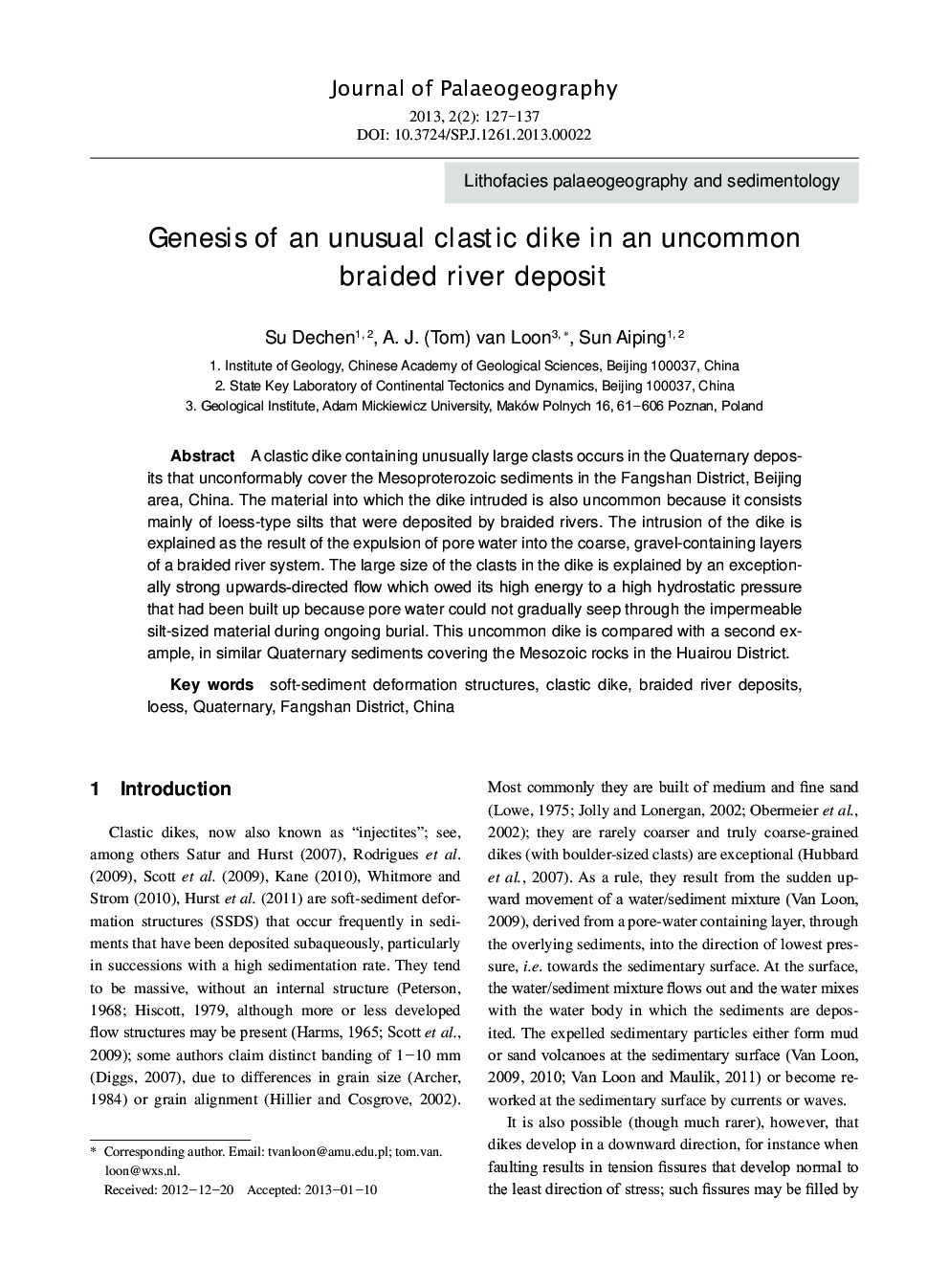| Article ID | Journal | Published Year | Pages | File Type |
|---|---|---|---|---|
| 4581030 | Journal of Palaeogeography | 2013 | 11 Pages |
A clastic dike containing unusually large clasts occurs in the Quaternary deposits that unconformably cover the Mesoproterozoic sediments in the Fangshan District, Beijing area, China. The material into which the dike intruded is also uncommon because it consists mainly of loess-type silts that were deposited by braided rivers. The intrusion of the dike is explained as the result of the expulsion of pore water into the coarse, gravel-containing layers of a braided river system. The large size of the clasts in the dike is explained by an exceptionally strong upwards-directed flow which owed its high energy to a high hydrostatic pressure that had been built up because pore water could not gradually seep through the impermeable silt-sized material during ongoing burial. This uncommon dike is compared with a second example, in similar Quaternary sediments covering the Mesozoic rocks in the Huairou District.
